
- ChatGPT - Home
- ChatGPT - Fundamentals
- ChatGPT - Getting Started
- ChatGPT - How It Works
- ChatGPT - Prompts
- ChatGPT - Competitors
- ChatGPT - For Content Creation
- ChatGPT - For Marketing
- ChatGPT - For Job Seekers
- ChatGPT - For Code Writing
- ChatGPT - For SEO
- ChatGPT - For Business
- ChatGPT - Machine Learning
- ChatGPT - Generative AI
- ChatGPT - Build a Chatbot
- ChatGPT - Plugin
- ChatGPT - GPT-4o (Omni)
- ChatGPT in Excel
- ChatGPT for Test Automation
- ChatGPT on Android
- Make Money with ChatGPT
- ChatGPT for UI/UX Designers
- ChatGPT for Web Developers
- ChatGPT for Data Scientists
- ChatGPT for Bloggers
- ChatGPT for Personal Finance Management
- Automate Customer Support with ChatGPT
- Create Content Calendars with ChatGPT
- Plan Events and Trips with ChatGPT
- Draft Legal Documents with ChatGPT
- Improve Your Coding Skills with ChatGPT
- New Language with ChatGPT
- Optimize ChatGPT Responses for Better Accuracy
- ChatGPT Useful Resources
- ChatGPT - Quick Guide
- ChatGPT - Useful Resources
- ChatGPT - Discussion
How to Optimize ChatGPT Responses for Better Accuracy?
ChatGPT serves as a powerful AI tool that assists with content creation, data analysis, customer support, and more. However, the quality of its responses relies on how well you frame your queries. This guide will provide you with step-by-step strategies to optimize ChatGPT's responses for greater accuracy and relevance.
Step 1: Understand ChatGPT's Capabilities and Limitations
Before optimizing responses, it's important to understand what ChatGPT excels at and where it has limitations.
| Capabilities | Limitations |
|---|---|
|
|
Step 2: Frame Clear and Specific Questions
One of the best ways to improve response accuracy is to make your prompts clear and specific.
For example, take this ambiguous question
"How can I enhance my website?"
Optimized query
"What are five practical strategies to improve the SEO and user experience of my WordPress website?"
Here's why this method works well
- It specifies the platform (WordPress).
- It defines the goals (SEO and user experience).
- It requests a specific number of recommendations.
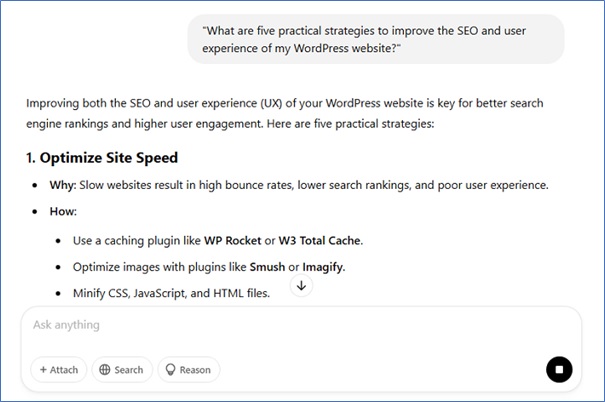
Step 3: Use Context and Background Information
ChatGPT provides better answers when it grasps the context.
Example
"Assist me in creating a blog entry."
Optimized
"Assist me in crafting a 1000-word blog entry focused on digital marketing trends in 2024 tailored for small businesses. Please include an introduction, key trends, and actionable tips."
Reason this is effective −
- Clarifies the desired word count
- Identifies the intended audience (small businesses)
- Maps out the structure
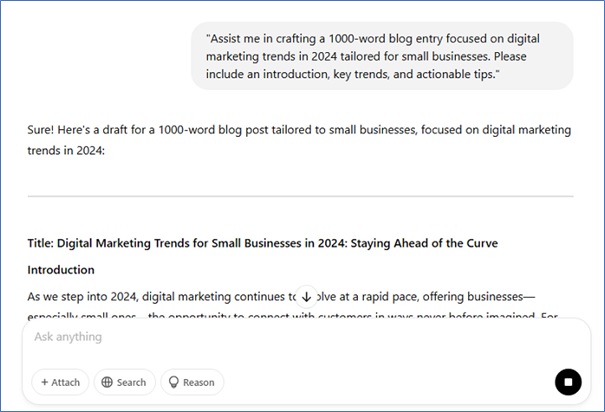
Step 4: Break Down Complex Requests
For intricate tasks, breaking them down into smaller parts ensures clarity and depth.
For instance
"Create a marketing strategy."
Revised
- "Generate creative ideas for a new product's marketing initiative."
- "Write engaging taglines for each promotional material."
- "Set up a timeline for implementation on a monthly basis."
Reasons why this method works
- Dissects the creative, content, and planning elements
- Provides specific prompts for each separate task.
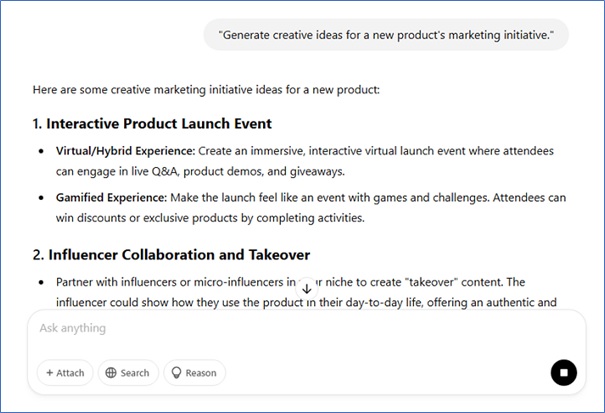
Step 5: Use Role-Based Prompts
When you assign a role to ChatGPT, it customizes its responses to reflect a specific perspective.
Example
"Explain marketing strategies."
Optimized
"As a digital marketing consultant, provide advanced marketing strategies for a SaaS company aiming to increase conversions."
Why this works: Create Content Calendars with ChatGPT
- Adopts a professional's viewpoint
- Focuses on advanced strategies
- Targets a specific industry and goal
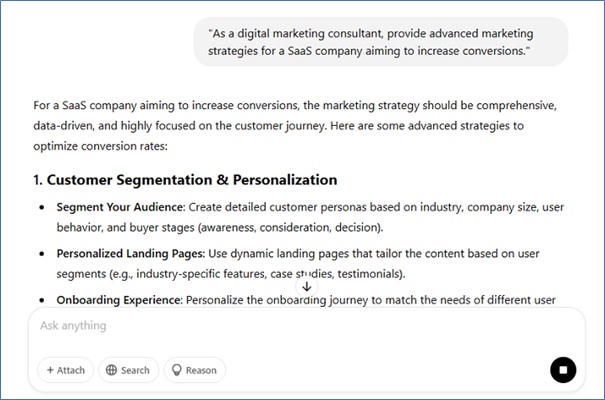
Step 6: Request Step-by-Step Guidance
For processes and tutorials, detailed step-by-step guidance improves understanding.
Example
"What are the steps to launch a blog?"
Optimized
"Could you outline a detailed step-by-step process for launching a blog on WordPress, including choosing a domain, setting up hosting, and planning content?"
Why this is effective
- It divides the process into distinct phases
- Encompasses both technical and creative elements
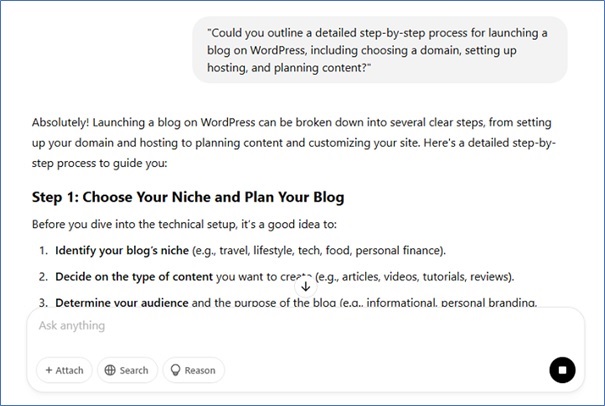
Step 7: Use Follow-Up Questions for Refinement
When a response misses the mark, you can increase accuracy by asking follow-up questions.
For instance
"Thatâs useful, but could you make this explanation easier for beginners?"
Why this approach is effective
- It simplifies the response's complexity.
- It tailors the content for various levels of understanding.
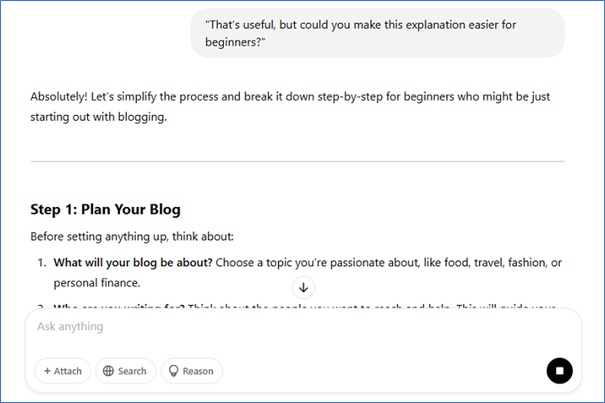
Step 8: Set Formatting Expectations
When you need structured output, specify the format.
Example
"Summarize this report."
Optimized
"Provide a summary of this report in bullet points, highlighting key data and conclusions."
Why this works
- It organizes information clearly.
- It emphasizes essential elements.
Step 9: Test and Iterate
If a response isn't accurate, tweak your prompt and test again.
Example
"Explain machine learning."
Iteration
"Explain machine learning for beginners with simple examples and no technical jargon."
Why this works
- You adjust for audience comprehension.
- You avoid unnecessary complexity.
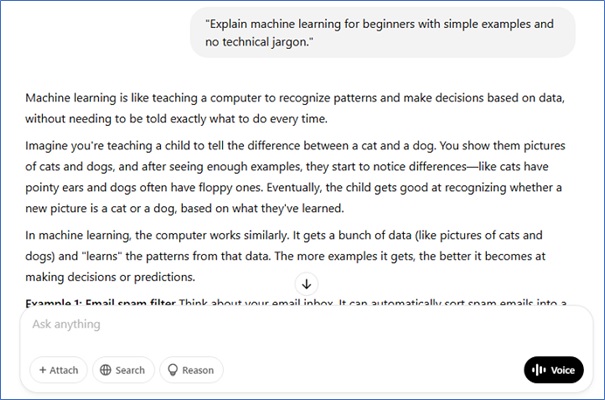
Step 10: Leverage Examples for Clarity
Providing examples aids ChatGPT in understanding the preferred style and content better.
For example:
"Write a product description."
Improved version
"Draft a product description for a wireless noise-canceling headset. Iâd like to convey a tone similar to this: [Insert Example]"
Why this works:
- It highlights the intended tone and style
- It eliminates any ambiguity
Conclusion
To optimize ChatGPT's responses, you need to provide clear, detailed, and well-structured prompts. By following the steps outlined in this tutorial, you can ensure that you receive more accurate, relevant, and high-quality outputs tailored to your needs. Practice refining your queries and using follow-ups to achieve the best results.